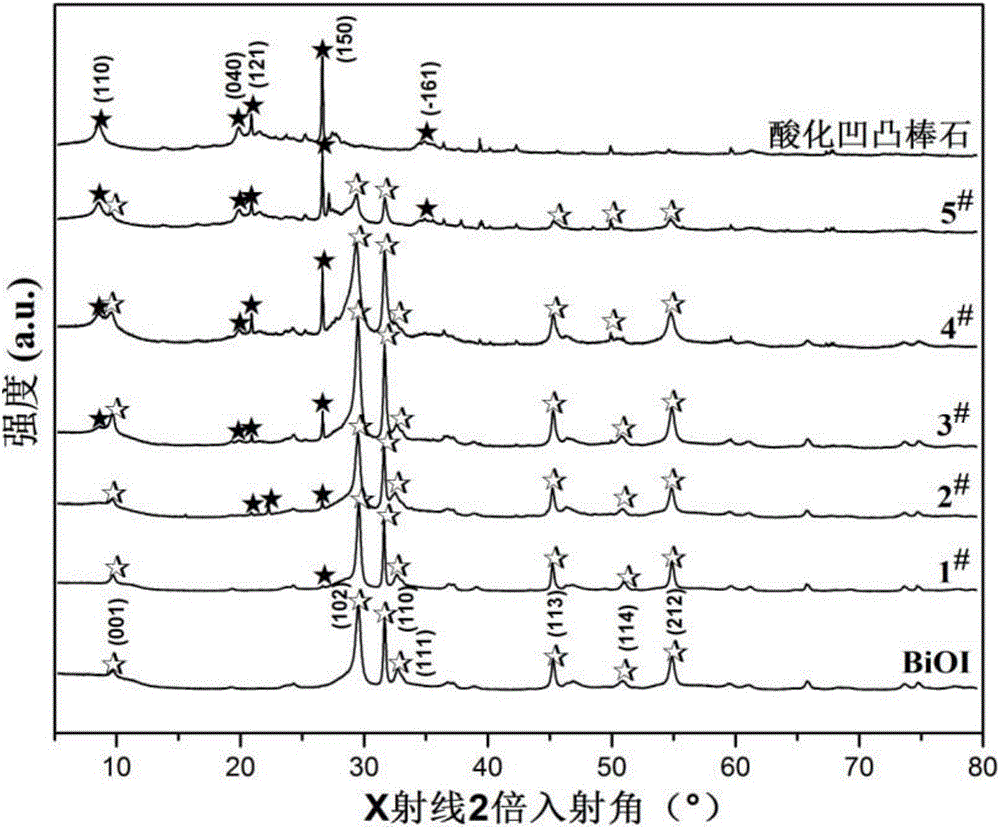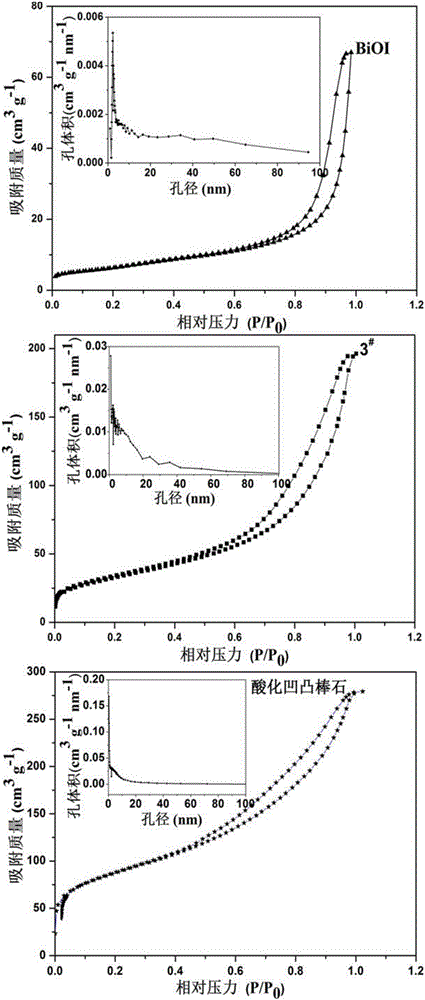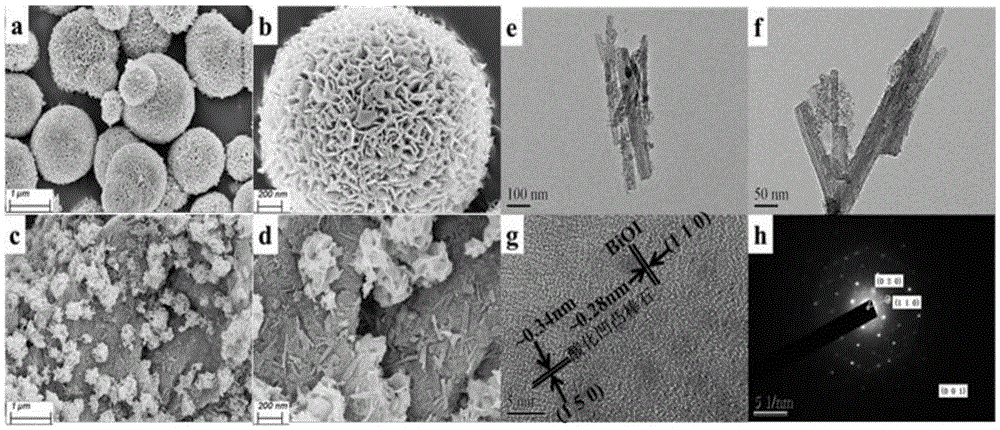Preparation method of BiOI/acidified attapulgite composite bifunctional photocatalytic material
A technology of acidifying attapulgite and photocatalytic materials, which is applied in the field of photocatalysis and material chemistry, can solve the problems of low level of comprehensive utilization, and achieve the effects of high adsorption and photocatalytic activity, low production cost and simple process
- Summary
- Abstract
- Description
- Claims
- Application Information
AI Technical Summary
Problems solved by technology
Method used
Image
Examples
Embodiment 1
[0026] Weigh 20g of attapulgite clay, soak it with 80ml of 6mol / L HCl at 60°C for 12h, filter it with suction, wash it repeatedly with deionized water until neutral, and dry it at 80°C to obtain 18.2g of acidified attapulgite, which is ready for use. Weigh 5.0g Bi(NO 3 ) 3 ·5H 2 O was mixed with 1.7g of KI solid, added 50ml of ethylene glycol, and mechanically stirred for 30min until dissolved. Weigh 0.4 g of acidified attapulgite and add it to the above homogeneous solution, stir mechanically for 1 h, transfer to a high-pressure reactor, and conduct hydrothermal crystallization at 160° C. for 24 h to obtain the desired product. The product was cooled to room temperature, filtered with suction, washed 2 to 3 times with absolute ethanol, dried at 80°C, and ground to obtain 1 # The surface properties of BiOI / acidified attapulgite composites (including specific surface area, pore volume and pore diameter data) are shown in Table 1.
Embodiment 2
[0028] Weigh 3.9g Bi(NO 3 ) 3 ·5H 2 O was mixed with 1.3g of KI solid, added 50ml of ethylene glycol, and mechanically stirred for 30min until dissolved. Weigh 1.2 g of the acidified attapulgite prepared in Example 1, add it to the above homogeneous solution, stir it mechanically for 1 h, transfer it to a high-pressure reactor, and conduct hydrothermal crystallization at 160° C. for 24 h to obtain the desired product. The product was cooled to room temperature, filtered with suction, washed 2 to 3 times with absolute ethanol, dried at 80°C, and ground to obtain 2 # The surface properties of BiOI / acidified attapulgite composites (including specific surface area, pore volume and pore diameter data) are shown in Table 1.
Embodiment 3
[0030] Weigh 2.8g Bi(NO 3 ) 3 ·5H 2O was mixed with 1.0g of KI solid, added 50ml of ethylene glycol, and mechanically stirred for 30min until dissolved. Weigh 2.0 g of the acidified attapulgite prepared in Example 1, add it to the above homogeneous solution, stir it mechanically for 1 h, transfer it to a high-pressure reactor, and conduct hydrothermal crystallization at 160° C. for 24 h to obtain the desired product. The product was cooled to room temperature, filtered with suction, washed 2 to 3 times with absolute ethanol, dried at 80°C, and ground to obtain 3 # The surface properties of BiOI / acidified attapulgite composites (including specific surface area, pore volume and pore diameter data) are shown in Table 1.
PUM
| Property | Measurement | Unit |
|---|---|---|
| specific surface area | aaaaa | aaaaa |
Abstract
Description
Claims
Application Information
 Login to View More
Login to View More - R&D
- Intellectual Property
- Life Sciences
- Materials
- Tech Scout
- Unparalleled Data Quality
- Higher Quality Content
- 60% Fewer Hallucinations
Browse by: Latest US Patents, China's latest patents, Technical Efficacy Thesaurus, Application Domain, Technology Topic, Popular Technical Reports.
© 2025 PatSnap. All rights reserved.Legal|Privacy policy|Modern Slavery Act Transparency Statement|Sitemap|About US| Contact US: help@patsnap.com



